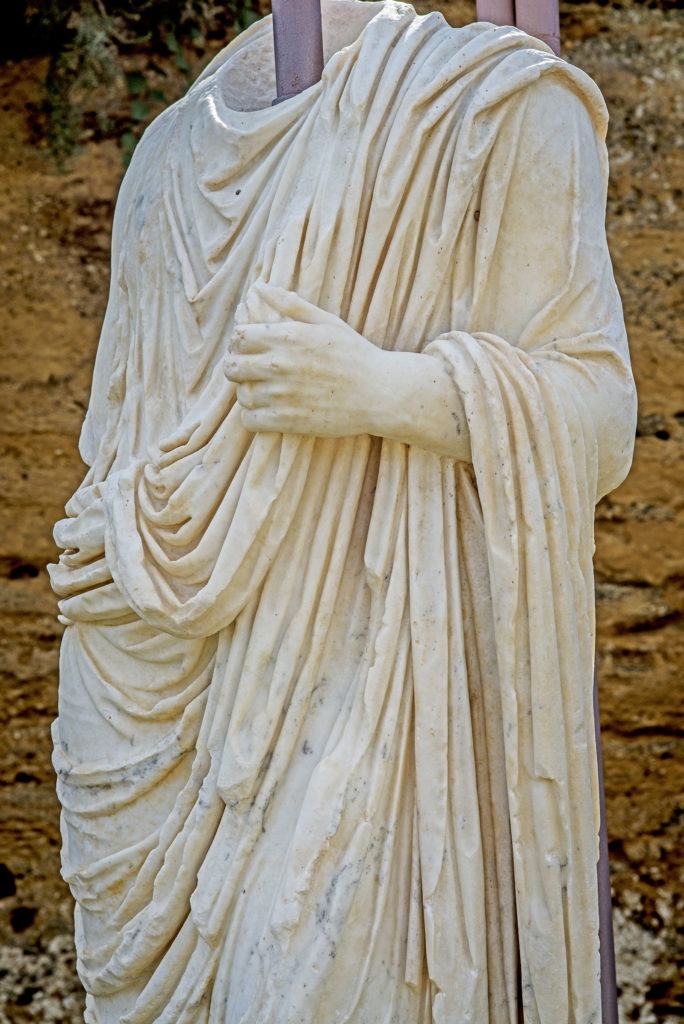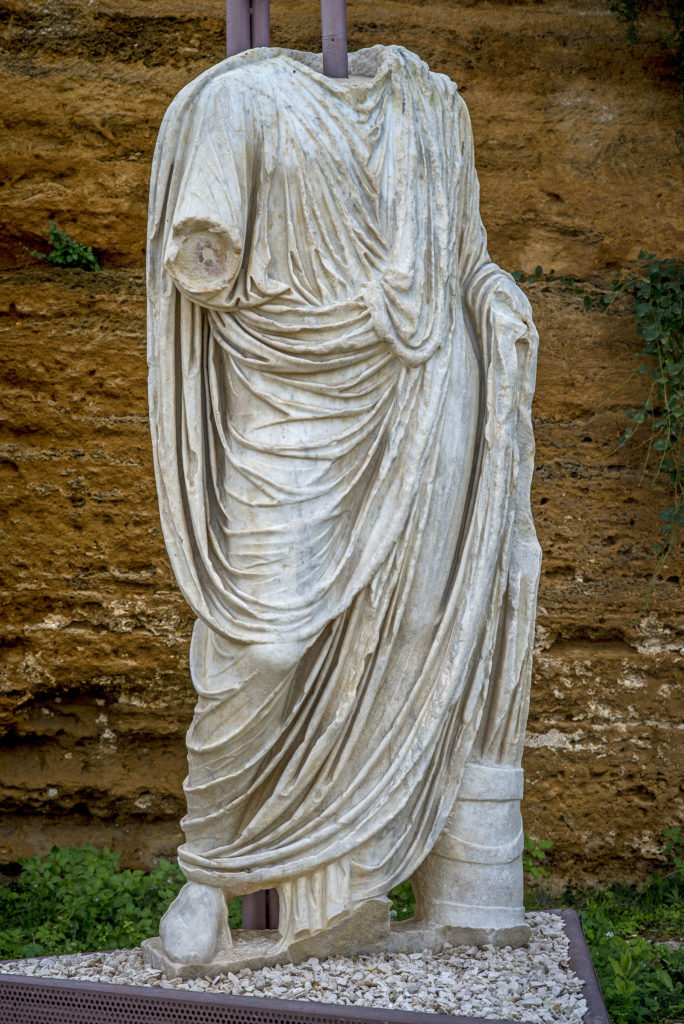The refined drapes of the togati statues are the first element we notice.
There is an apparent sensation of soft wool or cotton togas, delicate to the touch while supporting a body in movement.
In reality, they were carved into blocks of white marble, which is smooth and cold to the touch: the unknown sculptor of these works masterfully transformed a block of stone into a soft robe.

Despite their grandeur, the statues of the togati appear graceful and composed.
The drapery, which captures the attention most, follows the shapes of the bodies and replicates in detail all the folds that are created when the garment is worn.
The artist’s chisels reproduced an image so similar to reality that as spectators we are unaware of the material they are made from, leaving us to watch and wait for the fabric togas to move at the first gust of wind.
